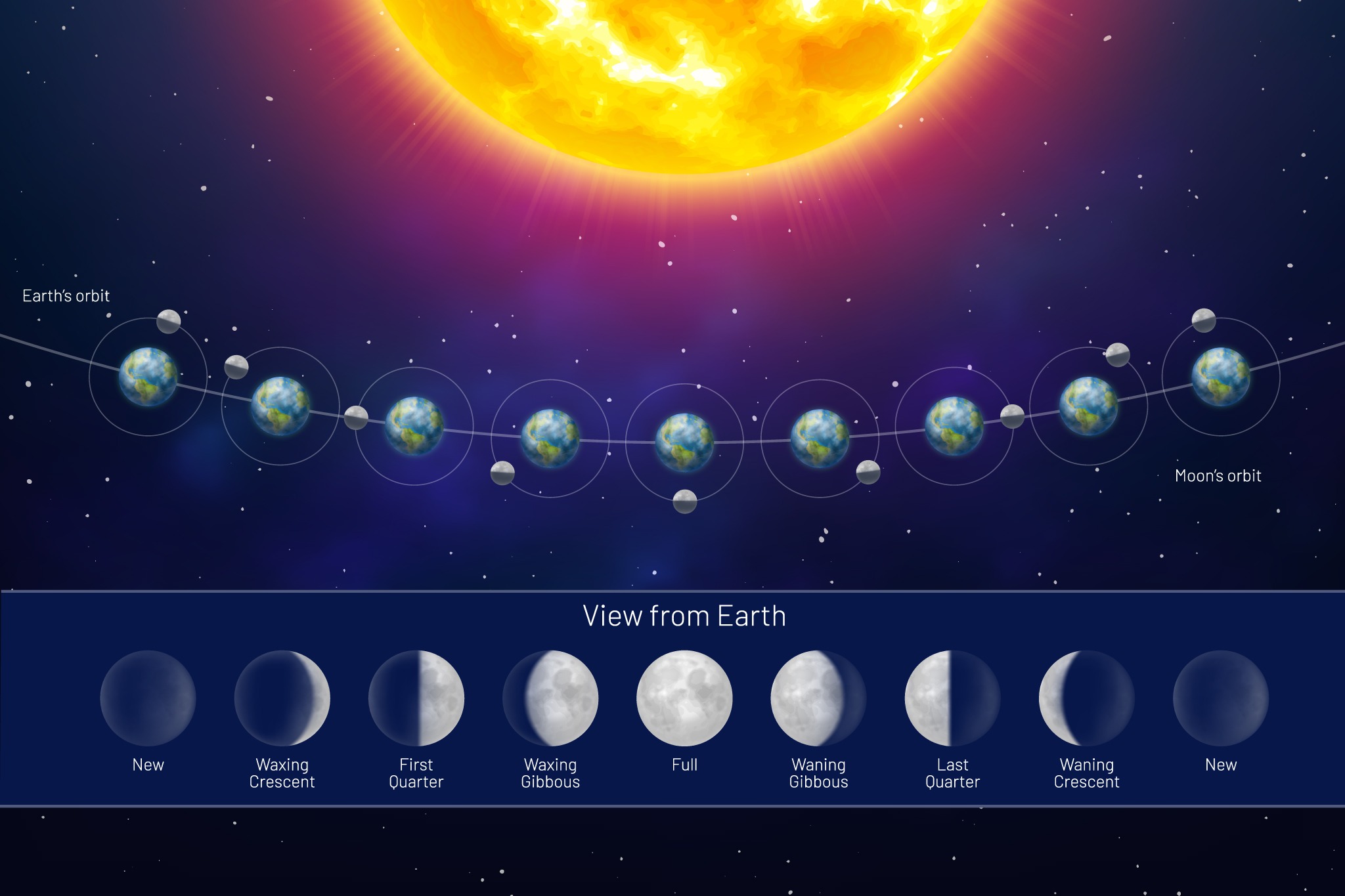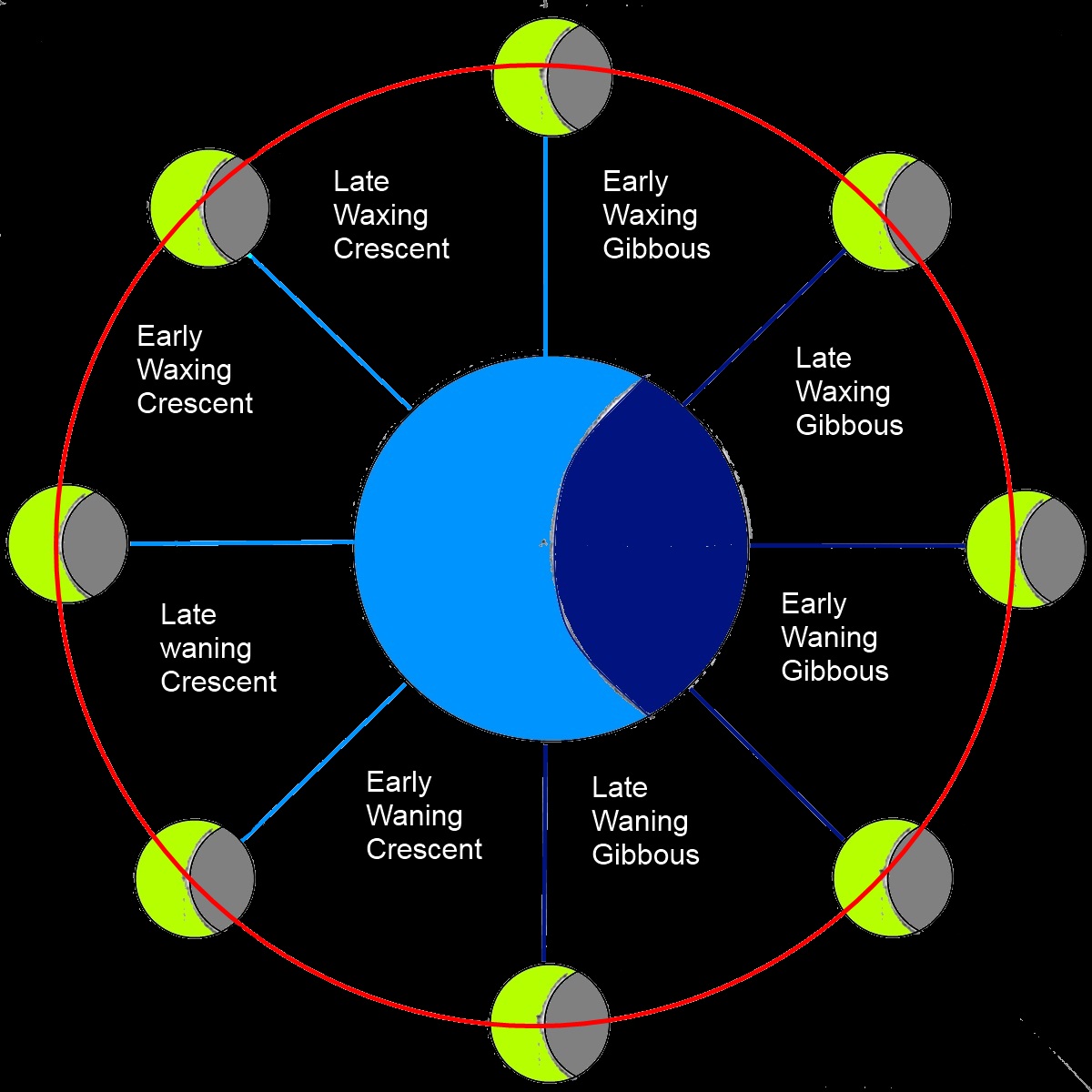Are you eager to delve into the fascinating world of lunar transformations? "Phases Of The Moon: A Comprehensive Guide To Lunar Changes" offers an invaluable roadmap to understanding the celestial ballet performed by our celestial companion.
Editor's Notes: Phases Of The Moon: A Comprehensive Guide To Lunar Changes has published today date, providing a timely resource for enthusiasts, scholars, and anyone curious about the intricate dance of our celestial neighbor.
Through meticulous analysis and comprehensive research, we have curated this in-depth guide to empower you with a profound understanding of the moon's ever-changing visage. Explore the intricate interplay between the Earth, the Sun, and the Moon, and unravel the secrets behind the lunar phases that guide our calendars, inspire our imaginations, and shape our cultural traditions.
| Phase | Appearance | Illumination |
|---|---|---|
| New Moon | Invisible | 0% |
| Waxing Crescent | Thin, crescent-shaped | 0-49% |
| First Quarter | Half-illuminated | 50% |
| Waxing Gibbous | More than half-illuminated | 51-99% |
| Full Moon | Fully illuminated | 100% |
| Waning Gibbous | More than half-illuminated | 51-99% |
| Third Quarter | Half-illuminated | 50% |
| Waning Crescent | Thin, crescent-shaped | 0-49% |
As we journey through the moon's phases, we will uncover the captivating stories they hold – from their influence on tides and biological rhythms to their role in shaping human history and mythology.

What Causes Moon Phases? (+ All 8 Moon Phases Explained) - Source astronimate.com
FAQ: Phases of the Moon
Learn more about the captivating science behind the lunar phases and expand your knowledge of our celestial companion.

Moon Phases Printable Guide Lunar Phases Printable Moon Pages Moon - Source www.etsy.com
Question 1: Why does the Moon's appearance change over time?
The Moon itself does not emit light. Instead, it reflects sunlight. As it revolves around Earth, different portions of its sunlit surface become visible to us, creating the illusion of changing phases.
Question 2: How long does it take for the Moon to complete a full cycle?
The Moon's cycle, from New Moon to New Moon, takes approximately 29.5 days, which is referred to as a synodic month.
Question 3: What is a "supermoon"?
A supermoon occurs when a Full Moon coincides with the Moon's closest point to Earth in its elliptical orbit, making it appear larger and brighter.
Question 4: Do lunar phases affect Earth's tides?
Yes, the gravitational pull of the Moon's varying phases causes ocean waters to rise and fall, resulting in high tides and low tides.
Question 5: What is the significance of the lunar eclipse?
A lunar eclipse occurs when the Earth's shadow falls on the Moon, blocking sunlight from reaching it. This creates a dramatic celestial event where the Moon can appear red or orange.
Question 6: Can lunar phases influence human behavior?
While there is some anecdotal evidence and cultural beliefs, scientific studies have not conclusively established a link between lunar phases and human behavior.
By delving into these FAQs, we enhance our understanding of the captivating lunar phases. These celestial events continue to inspire awe and wonder, offering a glimpse into the intricate workings of our solar system.
Now, let's explore further into the rich lore and mythology surrounding the Moon, unraveling its profound impact on human cultures throughout history.
Tips
Mastering the profound effects of the Moon's phases can profoundly enhance our daily lives. Cultivating an intimate connection with the celestial rhythms empowers us to harness their transformative energies.
Tip 1: Embrace the Rejuvenating New Moon
During the New Moon's enigmatic stillness, sow the seeds of new projects. Embark on introspective journeys, aligning your intentions with the universe's unfolding plan.
Tip 2: Harness the Expansive Waxing Crescent
As the Moon waxes, embrace its expansive nature. Foster growth and abundance, and share your burgeoning ideas. The crescent Moon's radiance illuminates hidden paths.
Tip 3: Embrace the Illuminating First Quarter
When the Moon reaches its First Quarter, embrace clarity and direction. Assess your progress, make decisions, and align your actions with your highest aspirations.
Tip 4: Celebrate the Height of the Waxing Gibbous
As the Waxing Gibbous Moon swells, give thanks for the abundance that surrounds you. Nurture your projects, collaborate with others, and let your creativity flourish.
Tip 5: Harness the Transformative Full Moon
The Full Moon's radiant illumination encourages culmination, release, and deep introspection. Let go of what no longer serves you, embrace gratitude, and set intentions for the coming cycle.
Tip 6: Embrace the Reflective Waning Gibbous
As the Moon Wanes, take time to reflect on your journey. Surrender to the ebb and flow of life, letting go of attachments. Release what has run its course and prepare for new beginnings.
Tip 7: Harness the Wisdom of the Waning Crescent
The Waning Crescent brings wisdom, intuition, and psychic insights. Trust your inner voice, engage in dream work, and let the Moon's gentle light guide you towards deeper self-awareness.
Tip 8: Welcome the Restful Dark Moon
Return to your inner sanctum during the enigmatic new cycle. Rest, recharge, and connect with your spiritual essence. The Dark Moon provides a fertile void for profound contemplation and transformation.
By harnessing the wisdom of the Moon's phases, we can cultivate a deeper connection to ourselves, the cosmos, and the rhythmic flow of life. Phases Of The Moon: A Comprehensive Guide To Lunar Changes provides a wealth of knowledge and insights to empower you on this profound journey.
Phases Of The Moon: A Comprehensive Guide To Lunar Changes
The ever-changing appearance of the moon, known as its phases, is a celestial phenomenon that has captivated humanity for centuries. The moon's phases are a result of its position relative to the Earth and the sun, and they provide a fascinating glimpse into the dynamics of our solar system.

Premium Photo | June 2025 lunar calendar, moon cycles, moon phases - Source www.freepik.com
- New Moon: Invisible as it lies between the Earth and the sun.
- Waxing Crescent: A thin crescent visible after the new moon.
- First Quarter: Half of the moon is illuminated.
- Waxing Gibbous: The moon appears more than half full.
- Full Moon: The entire moon is visible.
- Waning Gibbous: The moon gradually decreases in size and brightness.
These phases not only provide aesthetic delight but also hold cultural and scientific significance. The lunar cycle has been used to mark time, predict tides, and influence human activities throughout history. By understanding the phases of the moon, we gain a deeper appreciation for the intricate workings of the cosmos.

The Lunar Phases and How to Use Them - Part 1 | Astrolore.org - Source astrolore.org
Phases Of The Moon: A Comprehensive Guide To Lunar Changes
The moon's phases are caused by the changing position of the moon relative to the sun and Earth. As the moon orbits Earth, different parts of its surface are illuminated by the sun. The amount of illuminated surface that we see from Earth changes throughout the month, resulting in the different phases of the moon. The phases of the moon have a significant impact on many aspects of our planet, including the tides, weather, and plant and animal life.

Navigating The Lunar Landscape: A Comprehensive Guide To The Moon - Source ethiopianholidayscalendar.pages.dev
The phases of the moon are an important part of understanding the moon's orbit around Earth. By tracking the phases of the moon, we can learn more about the moon's position in its orbit and how it affects our planet. The phases of the moon are also a beautiful sight to behold. They can be enjoyed by people of all ages and cultures.
Understanding the phases of the moon can help us to better understand the relationship between the Earth, the moon, and the sun. It is hoped that this guide would have helped readers in their understanding of the topic.
Conclusion
The phases of the moon are a fascinating and ever-changing part of our natural world. They have been observed and studied for centuries, and they continue to captivate our imagination. By understanding the phases of the moon, we can better appreciate the beauty and complexity of our planet and its place in the solar system.
As we continue to learn more about the moon, we will undoubtedly gain a deeper understanding of the universe around us. The phases of the moon are a reminder that we are part of something much larger than ourselves, and that there is still much to be discovered about the world around us.
